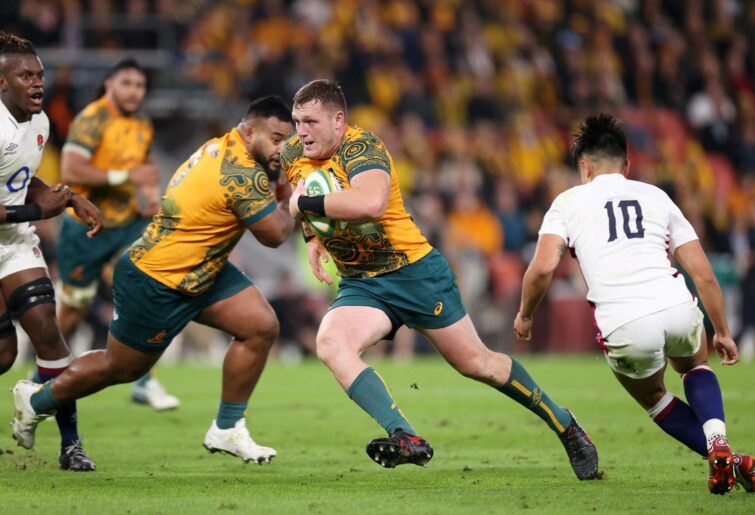If the purpose of the 2023 RWC draw was to prevent the early exit of the favourites, the draw fails dismally.
The RWC 2023 draw was based on the world rankings of January 2020. These rankings reflected the relative strengths of teams at that time that have changed remarkably in the past three years.
Consequently, the top five teams in the current standings – Ireland, France, New Zealand, South Africa, and Scotland – are all grouped on the same side of the draw destined to eliminate each other.
Only two of the top five can therefore make the semi-finals. The draw is especially harsh to Ireland, South Africa, and Scotland which are grouped in the same pool as only two of these teams can progress to the quarterfinals.
The official 2020 draw has been severely criticised by coaches, players, and supporters. World Rugby chief executive, Alan Gilpin, agreed when he stated, that “future Rugby World Cups will follow the example of football, where draws are made less than a year out from the start of a major event’.

(Photo by Mark Kolbe/Getty Images)
This article compares the outcomes of the current draw against the outcomes of a draw that is based on current world rankings using the 2023 RWC Monte Carlo simulation model introduced in my previous article (The winners and losers of the RWC 2023 draw).
This model helps us quantify the impact of the draw by comparing the outcomes of the hypothetical 2023 draw based on current ratings with those of the official 2020 draw (with the latter in brackets).
Will the draw decide the winner? The teams most likely to win the 2023 Rugby World Cup are New Zealand 28.7% (32.3%), then Ireland 22.8% (23.6%), France 16.2% (14.8%), South Africa 13.7% (13.2%) and England 8.9% (10%).
As the winner needs to win three consecutive finals, the draw has very little influence to decide the ultimate winner.
Will the draw decide the finalist? The most likely final in the official 2020 draw is between New Zealand and France (13.1%). This final is played between two teams that the model does not consider the most likely to win the tournament.
For the 2023 draw the most likely final is between New Zealand and Ireland 16.8% (9.6%), the two teams the model considers the most likely to win the tournament. The other likely finals are between New Zealand and South Africa 10.8% (10.7%), Ireland vs France 8.9% (5.9%), New Zealand vs France 7.2% (13.1%), and South Africa vs France 6.5% (3.1%). The draw has a meaningful impact on deciding the finalists.
Does the draw decide the semi-finals and quarterfinals? The chance that any three of the current top six teams – Ireland, France, New Zealand, South Africa, Scotland, and England make up the four semi-finalists increases to 32.3% (from 0.9%).
The chance that the current top eight teams progress to the quarterfinalist also increases to 23.9% (from 0%). The draw has a significant impact on deciding both the quarterfinalists and semi-finalists.
Who are the two biggest winners if the draw was based on current ratings?
The broadcasters, viewers, players, coaches, and the public that prefer to see the finals played between the best sides. The value of the tournament, in my view, diminishes if the favourites eliminate each other early in the tournament. Isn’t the purpose of the draw to prevent this from happening?
Scotland has been dealt a raw deal in the 2020 draw as they are grouped in Pool B with Ireland, South Africa, and Tonga (and Romania). If the draw is based on 2023 rankings, Scotland will be grouped with Ireland, Wales, and Fiji (and Romania) and can more than double their chances to reach the quarterfinals.

Scotland’s Finn Russell (Photo by Paul Devlin/SNS Group via Getty Images)
Who are the two biggest losers if the draw is based on current ratings?
World Rugby contracted a third party to sell the tickets and take the associated risks. It would be very difficult (even unpractical and expensive) to make late changes to the pools as tickets have already been sold.
Wales is grouped in Pool C with Australia, Fiji, Georgia, and Portugal in the 2020 draw. In the 2023 draw, Wales will be grouped with Ireland, Scotland, Fiji, and Romania. The chance that Wales will reach the quarterfinals will plummet from 92% to 69%.
These results are from a “Monte Carlo” simulation model developed by the author that considers the historical outcomes from head-on-head encounters between teams and the relative ratings of the respective teams adjusted for recent form and the impact of the draw.
Monte Carlo simulation is a powerful uncertainty modelling tool that calculates the chance of any particular outcome occurring instead of trying to consider every possible outcome in a complex system.
The model and associated probabilities have been tested against actual outcomes from previous World Cups and recent test matches. I found that the model is well-calibrated and will continue to refine the model as the year progresses.
Although these probability assessments are subjective, they are based on solid evidence, and good reasoning and not a “gutfeel” or what I would like to be true.
This article highlighted that the current draw devalues the semi-finals. In the next article, I will assume that changes to the pools are not feasible and consider how the quarterfinal schedule could be changed to protect the integrity of the tournament.




































































































